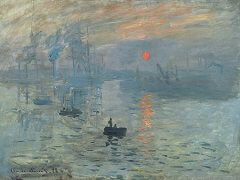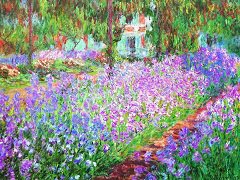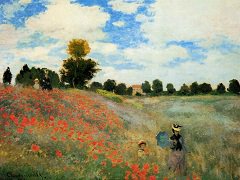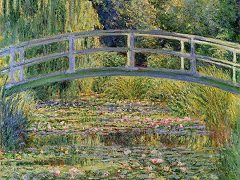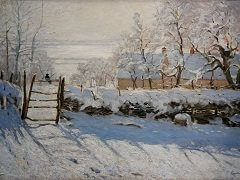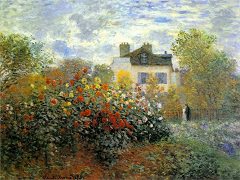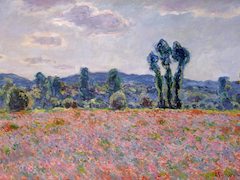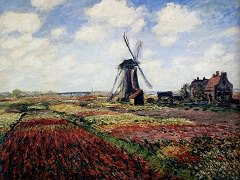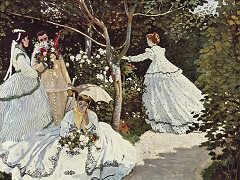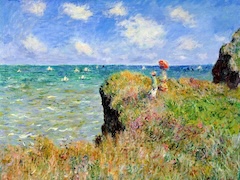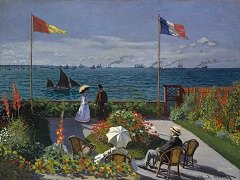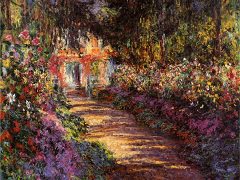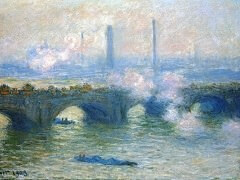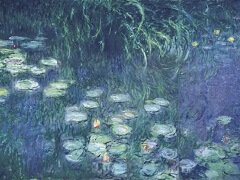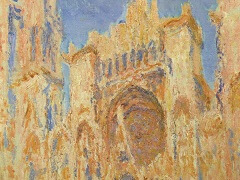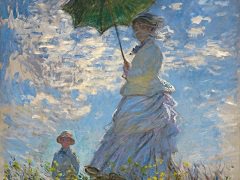Boulevard des Capucines, 1873-1874 by Claude Monet
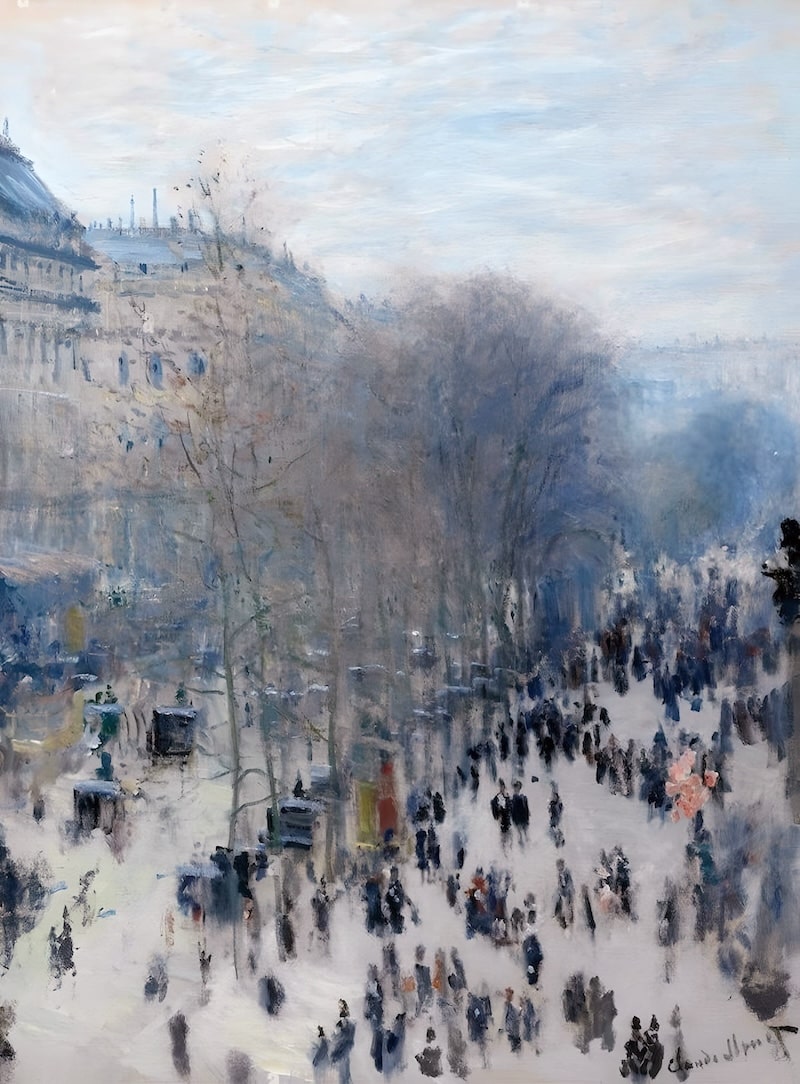
Boulevard des Capucines presented a genuine glimpse of Parisian life on a winter day, and the critic Ernest Chesneau claimed that Monet captured the elusive quality of movement with unprecedented skill.
The painting captures a scene of the hustle and bustle of Parisian life from the studio of Monet's friend, the photographer Felix Nadar. Applying very little detail, Monet uses short, quick brushstrokes to create the "impression" of people in the city alive with movement. Critic Leroy was not pleased with these abstracted crowds, describing them as "black tongue-lickings."
In Boulevard des Capucines, Monet used the Japanese mobile viewpoint to embody the fragmentary, yet dynamic modern experiences of space as the eye plunges into the deep channel of the crowded street, and seeks to disentangle the clues to the complex visual experiences given by a myriad detached brushstrokes. Fragmentation is also created by the double perspective thrust formed by the apartment blocks on the left and by the line of wintry trees and snow-topped cabs in the middle of the composition. Monet has also isolated his figures on the snow-covered pavements, but his brushstrokes fuse them into groups, just as a crowd melds the movements of many individuals.

